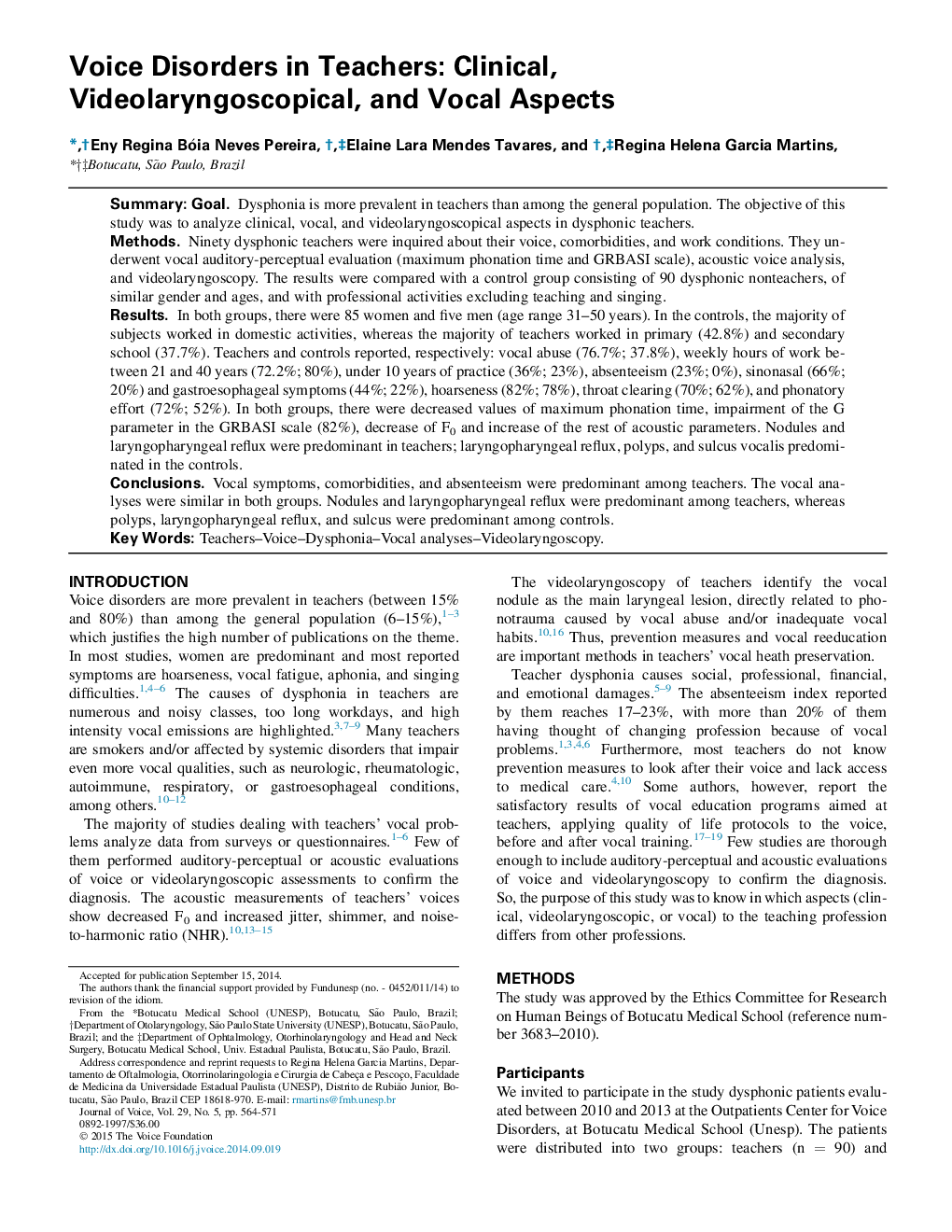| Article ID | Journal | Published Year | Pages | File Type |
|---|---|---|---|---|
| 1101373 | Journal of Voice | 2015 | 8 Pages |
SummaryGoalDysphonia is more prevalent in teachers than among the general population. The objective of this study was to analyze clinical, vocal, and videolaryngoscopical aspects in dysphonic teachers.MethodsNinety dysphonic teachers were inquired about their voice, comorbidities, and work conditions. They underwent vocal auditory-perceptual evaluation (maximum phonation time and GRBASI scale), acoustic voice analysis, and videolaryngoscopy. The results were compared with a control group consisting of 90 dysphonic nonteachers, of similar gender and ages, and with professional activities excluding teaching and singing.ResultsIn both groups, there were 85 women and five men (age range 31–50 years). In the controls, the majority of subjects worked in domestic activities, whereas the majority of teachers worked in primary (42.8%) and secondary school (37.7%). Teachers and controls reported, respectively: vocal abuse (76.7%; 37.8%), weekly hours of work between 21 and 40 years (72.2%; 80%), under 10 years of practice (36%; 23%), absenteeism (23%; 0%), sinonasal (66%; 20%) and gastroesophageal symptoms (44%; 22%), hoarseness (82%; 78%), throat clearing (70%; 62%), and phonatory effort (72%; 52%). In both groups, there were decreased values of maximum phonation time, impairment of the G parameter in the GRBASI scale (82%), decrease of F0 and increase of the rest of acoustic parameters. Nodules and laryngopharyngeal reflux were predominant in teachers; laryngopharyngeal reflux, polyps, and sulcus vocalis predominated in the controls.ConclusionsVocal symptoms, comorbidities, and absenteeism were predominant among teachers. The vocal analyses were similar in both groups. Nodules and laryngopharyngeal reflux were predominant among teachers, whereas polyps, laryngopharyngeal reflux, and sulcus were predominant among controls.
